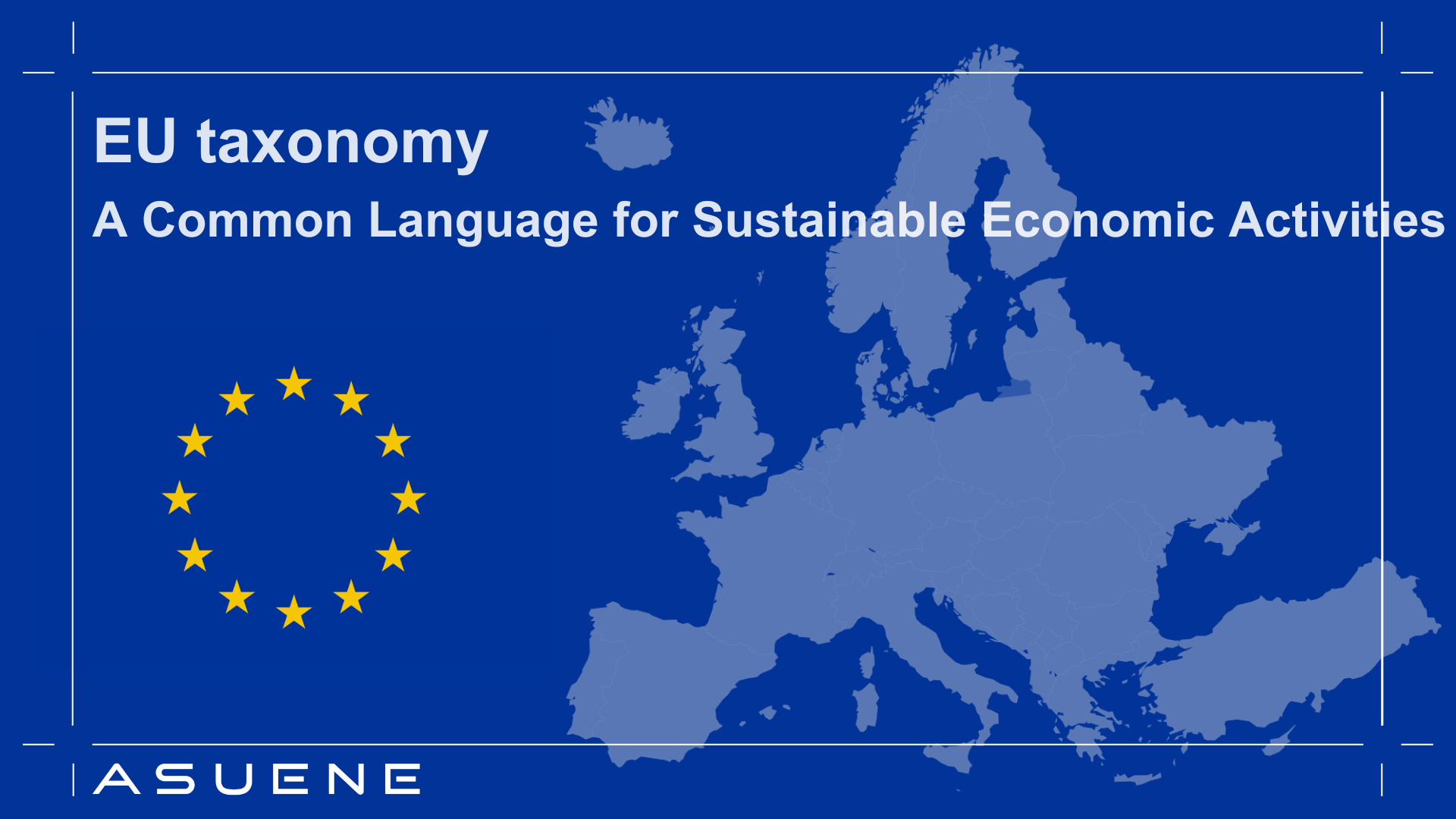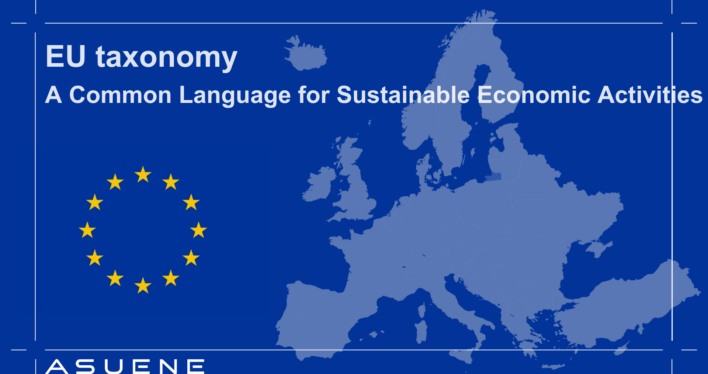- Article Summary
-

As the world faces the pressing challenges of climate change and environmental degradation, aligning financial flows with sustainable development has become a priority. In this context, the European Union (EU) has developed a groundbreaking framework: the European Taxonomy. This comprehensive classification system seeks to define and standardize what constitutes environmentally sustainable economic activities. For professionals and stakeholders in Environmental, Social, and Governance (ESG) domains, understanding the European Taxonomy is crucial for navigating the evolving landscape of sustainable finance.
What is the European taxonomy?
The European Taxonomy is a science-based framework designed to provide clarity and transparency for identifying sustainable economic activities. It serves as a tool to guide investments toward activities that contribute to the EU’s ambitious environmental objectives, particularly those outlined in the European Green Deal.
By setting clear criteria for what constitutes sustainable economic activities, the taxonomy addresses three main goals:
- Preventing Greenwashing: With sustainability becoming a significant focus for investors, many companies claim to be “green.” The taxonomy provides a standardized framework to verify these claims.
- Driving Investment Toward Sustainability: By identifying activities that contribute meaningfully to environmental objectives, the taxonomy encourages investments that support the EU’s climate and sustainability goals.
- Providing Guidance to Companies and Investors: It helps businesses and financial institutions assess the environmental performance of their activities and portfolios.
Six Environmental Objectives
The taxonomy focuses on six key environmental objectives, which represent the pillars of sustainability:
- Climate Change Mitigation
- Climate Change Adaptation
- Sustainable Use and Protection of Water and Marine Resources
- Transition to a Circular Economy
- Pollution Prevention and Control
- Protection and Restoration of Biodiversity and Ecosystems
Criteria for Sustainable Activities
For an activity to qualify as sustainable under the European Taxonomy, it must meet three fundamental criteria:
- Make a substantial contribution to at least one of the six environmental objectives.
- Do no significant harm (DNSH) to the other objectives.
- Comply with minimum social safeguards, such as human rights and labor standards.
These criteria are backed by Technical Screening Criteria (TSC), which provide detailed, sector-specific benchmarks for determining compliance.
Who Does It Apply To?
The taxonomy primarily targets large companies, financial institutions, and asset managers. It requires them to disclose the alignment of their activities and investments with the taxonomy. Reporting obligations are embedded in the Corporate Sustainability Reporting Directive (CSRD), which builds on the earlier Non-Financial Reporting Directive (NFRD).
This transparency is designed to:
- Enable investors to make informed decisions.
- Encourage businesses to adopt greener practices.
- Build trust in the ESG credentials of companies and financial products.
Implications for ESG Professionals
The European Taxonomy represents a paradigm shift in sustainable finance. For ESG practitioners, it provides a robust framework to:
- Align corporate strategies with regulatory requirements.
- Demonstrate sustainability efforts through measurable outcomes.
- Enhance credibility and attract investment by meeting the taxonomy’s stringent criteria.
Furthermore, the taxonomy’s emphasis on transparency and accountability helps build investor confidence in ESG initiatives, paving the way for greater impact.
Challenges and Opportunities
While the European Taxonomy sets a high bar for sustainability, it also presents challenges, including:
- Complexity: Navigating the detailed technical criteria can be daunting for businesses and investors.
- Dynamic Updates: The taxonomy is an evolving framework, requiring stakeholders to stay informed about changes.
- Implementation Costs: Aligning with the taxonomy may necessitate significant investments in new processes, technologies, and reporting mechanisms.
Why Work with ASUENE?
Navigating the complex requirements of the CSRD and EU Taxonomy is no small task. That’s where ASUENE Europe comes in.
As a subsidiary of Asuene Inc., a sustainability-focused startup based in Japan, ASUENE Europe specializes in carbon accounting software and ESG reporting solutions tailored to the needs of businesses operating in the EU. We’re here to help your company navigate the evolving landscape of European sustainability regulations, ensuring compliance while empowering you to achieve your environmental goals.
How Asuene Can Assist
- ESG Data Management: Accurately measure and manage your ESG metrics, including Scope 1, 2, and 3 GHG emissions, with our advanced software.
- Third-Party Assurance: Obtain the independent verification required for CSRD compliance, ensuring credibility and transparency.
- Consulting Services: Receive tailored advice on improving your sustainability performance and aligning with EU goals.
Our software automates data collection and integrates seamlessly with your existing systems, reducing manual input, saving time, and lowering costs. With ASUENE Europe’s comprehensive suite of services, you’ll have everything you need to meet CSRD and EU Taxonomy requirements while advancing your company’s sustainability objectives.
By partnering with ASUENE Europe, you’ll not only ensure compliance but also demonstrate leadership in sustainability, strengthening your brand and creating long-term value for your stakeholders.
